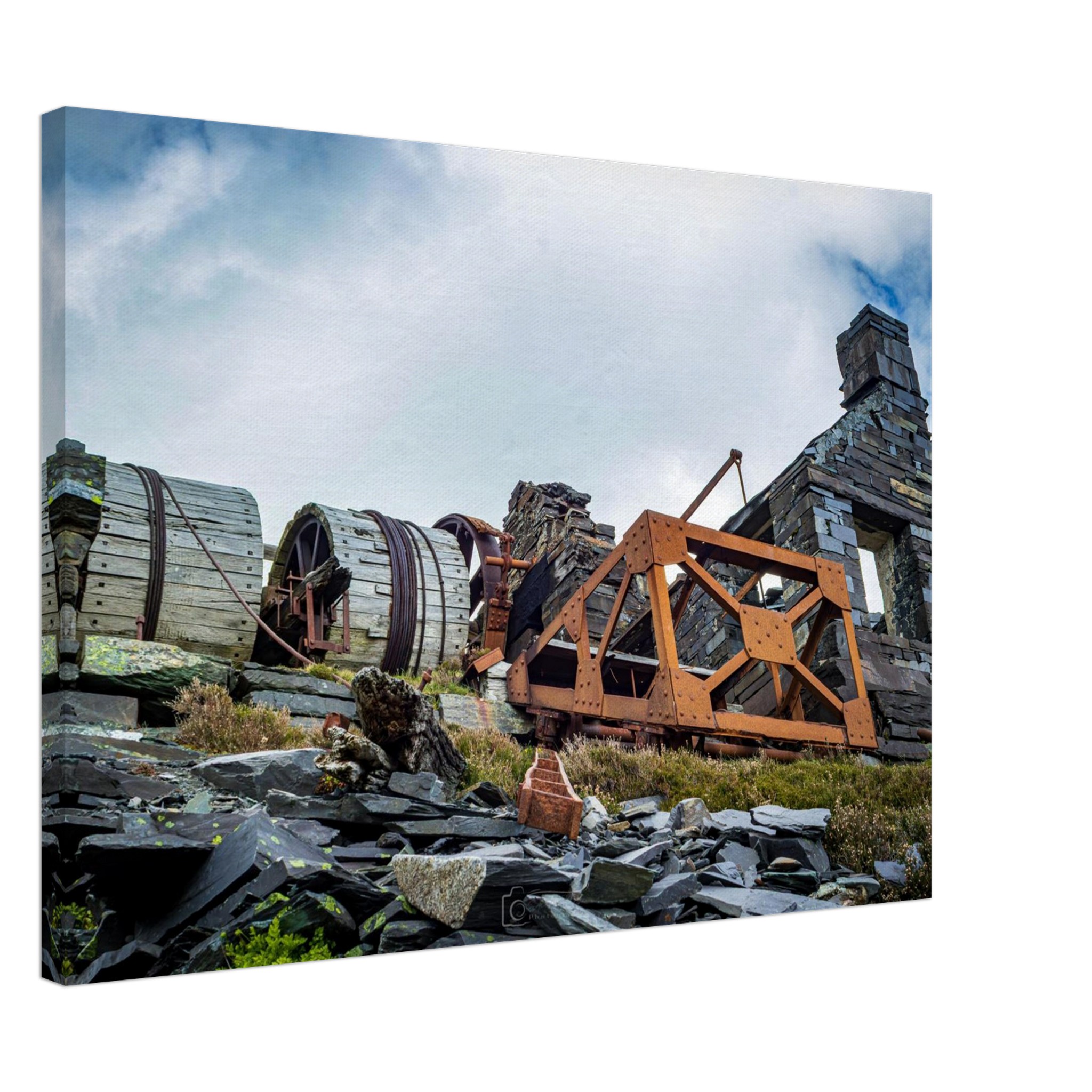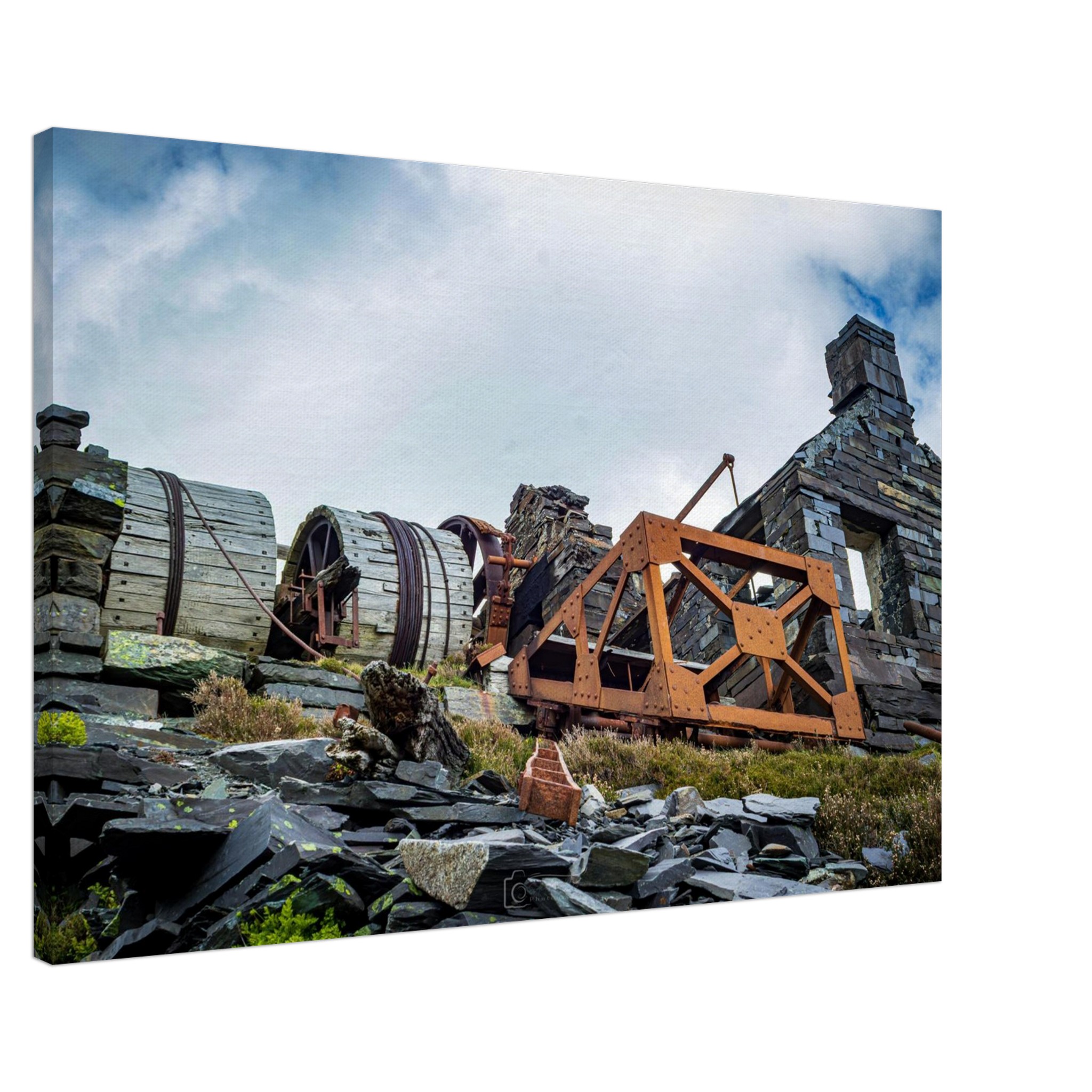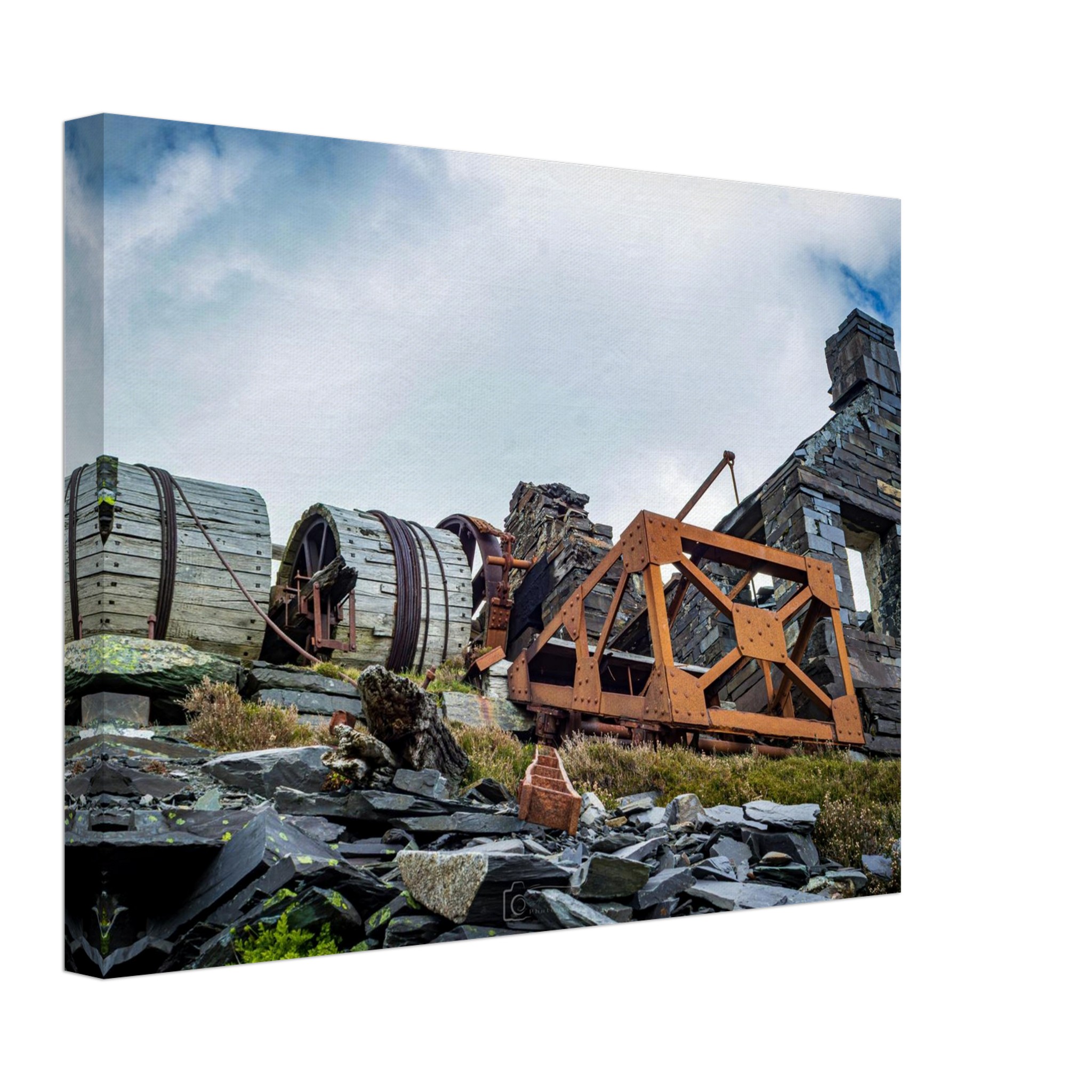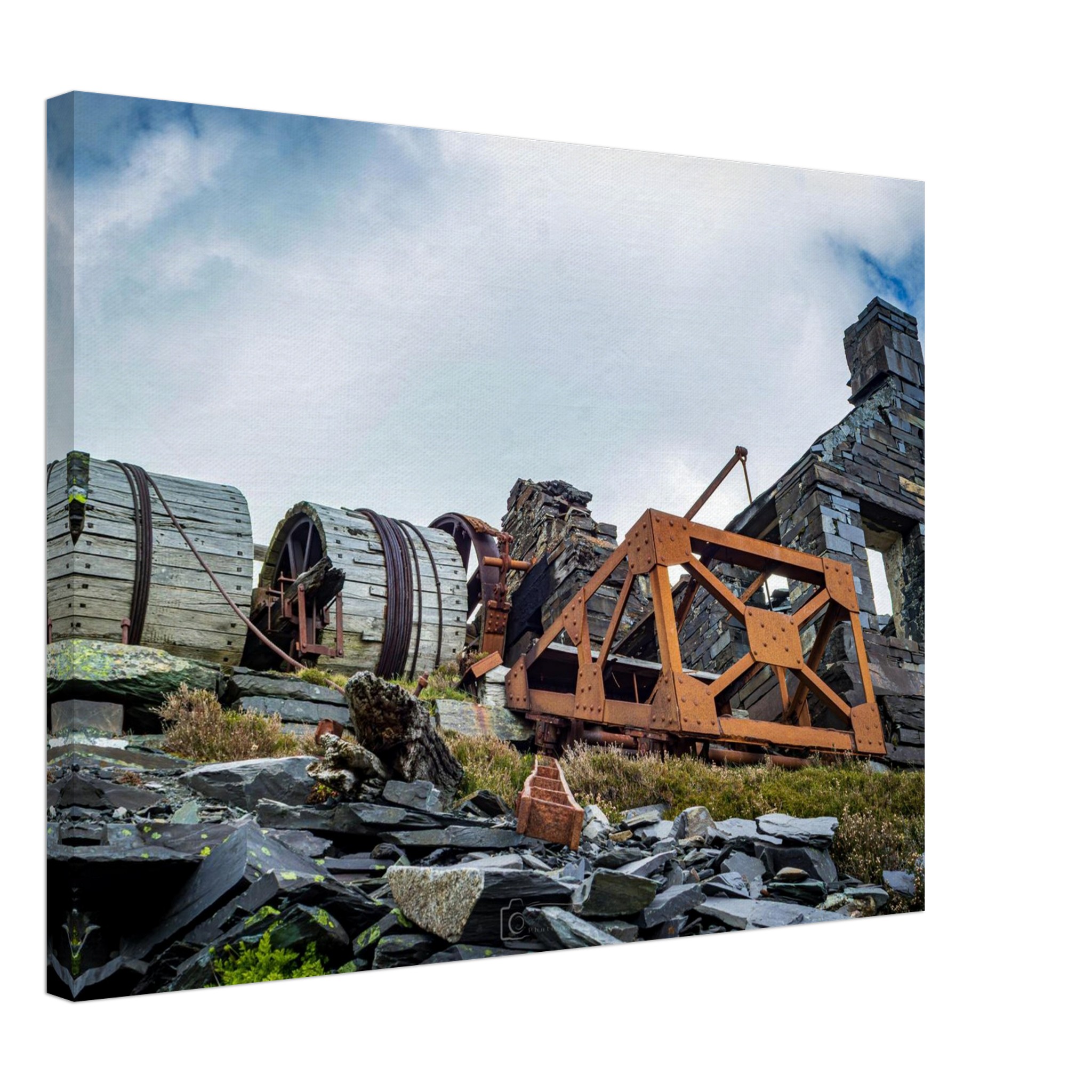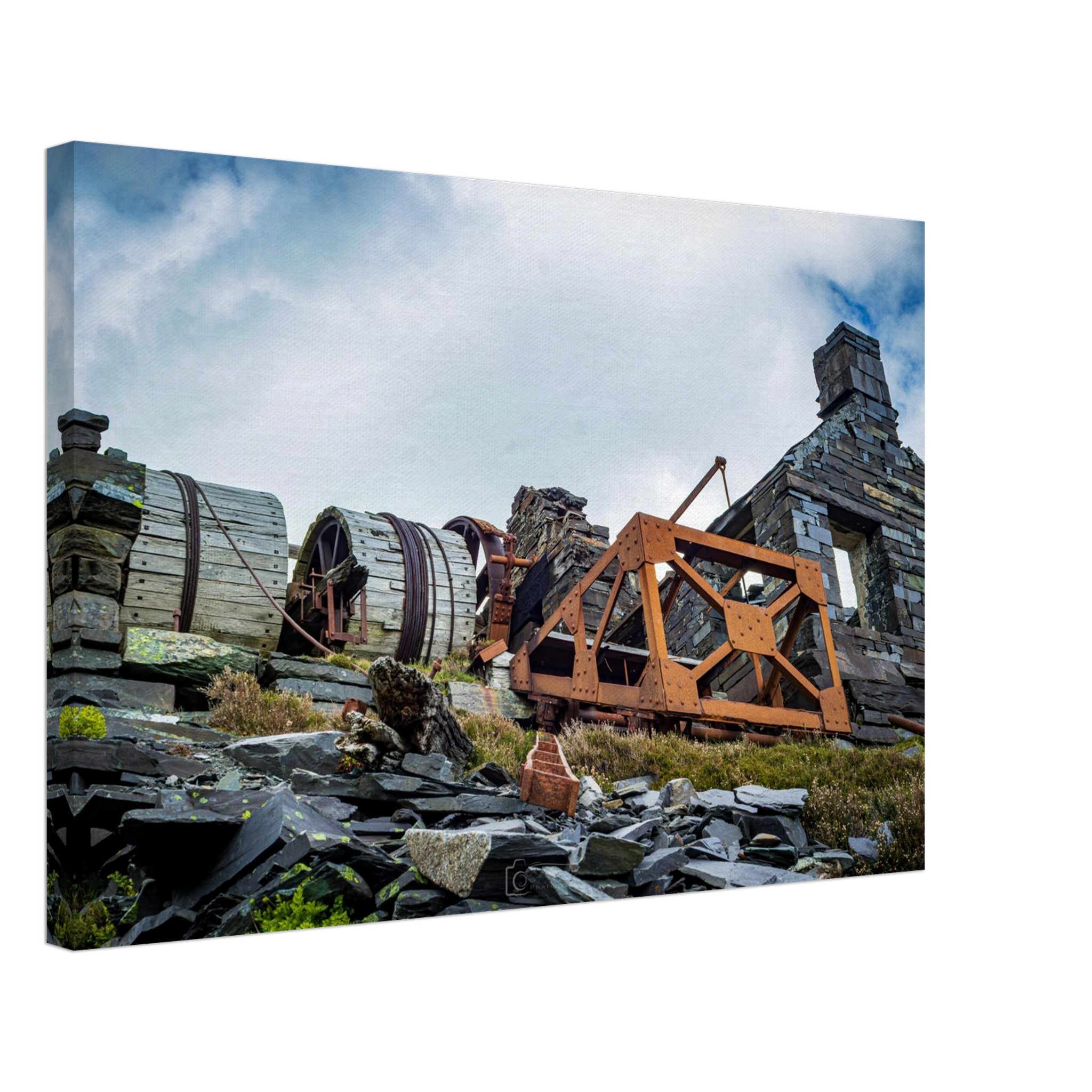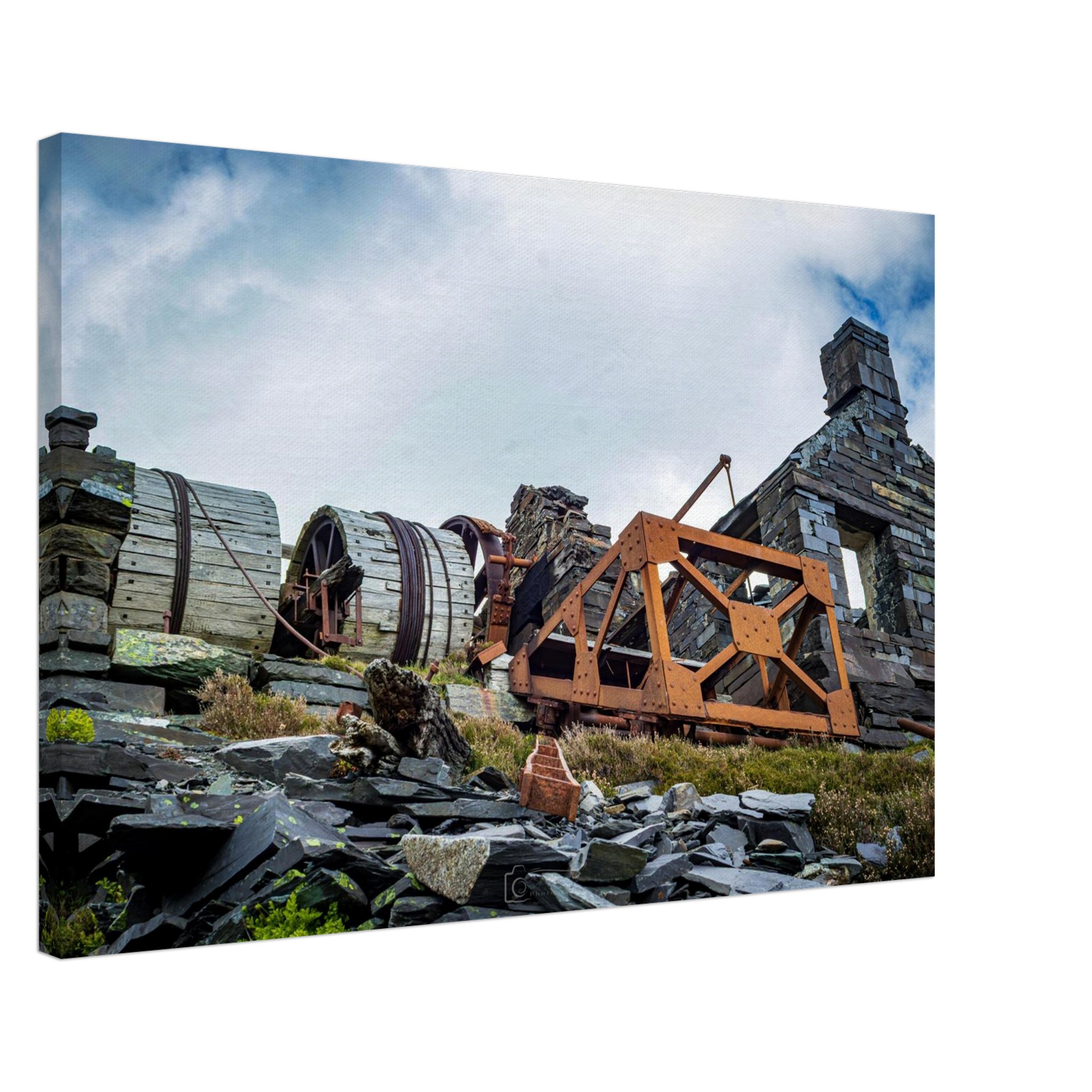Description
Nestled among the rugged, windswept landscape of the region, the remnants of Dinorwic Quarry stand as silent chronicles of a bygone era marked by relentless industry and extraordinary engineering achievements. The Dinorwic Quarry Brake Drum and Slate Haulage Cart historic relics, scattered across the aged terrain, evoke a vivid sense of the hardworking communities that once thrived here, dedicated to extracting precious slate that was highly sought after for centuries. Among the most captivating features that punctuate this landscape are the ancient brake drum and the weathered slate haulage cart, both standing as enduring witnesses to the quarry’s vibrant, yet demanding past.
The brake drum, once a vital component of the vast machinery that powered the quarry’s operations, now remains as a textured, antiquated artifact. Its surface, scarred and pitted by decades of exposure to the elements, bears the story of countless hours of toil and precision. Originally, this sturdy metal drum played a crucial role in controlling the heavy, complex machinery that lifted, transported, and processed the slate. It was part of a sophisticated system that required meticulous engineering to operate safely and efficiently, reflecting the ingenuity of the quarry’s engineers and workers. Over time, as technology advanced and the quarry was quieted, the brake drum was left behind, weathering the relentless forces of nature, yet still standing as a testament to the industrial prowess of the past.
Just a short distance away, the sturdy slate haulage cart captures the imagination with its simple yet effective design. Constructed from robust timber reinforced with iron fittings, this humble vehicle was an essential element of the quarry’s transportation network. It once carried heavy loads of finely cut slate, which was carefully loaded into its sturdy frame before being pushed or pulled along rough, uneven tracks carved into the landscape. These carts enabled workers to move their precious cargo efficiently from the extraction points to loading areas, often traversing steep inclines and challenging terrain. As a vital link in the chain of production, the cart symbolised the collaboration between human skill and mechanical ingenuity that kept the quarry functioning. Though no longer in motion, this relic captures the rhythm of everyday life in the quarry—hard, demanding, yet driven by a shared purpose.
These remnants do more than merely evoke a sense of history; Dinorwic Quarry Brake Drum and Slate Haulage Cart they serve as tangible connections to the resilience, craftsmanship, and hardworking spirit that shaped the region’s industrial heritage. Each rusted bolt and weathered surface tells a story of dedication and ingenuity, reflecting the collective efforts of generations of quarrymen who risked their health and safety to sustain their communities and provide the slate that became a cornerstone of regional prosperity. Exploring these relics prompts a deeper appreciation for the skills involved in constructing and maintaining such machinery and the physical effort required to extract and transport the stone through challenging conditions.
Furthermore, these artefacts offer an invaluable educational opportunity, allowing visitors to glimpse into the technological marvels of the past and understand the immense labour that went into creating the iconic landscape. The quarry’s remains illustrate an era when human effort combined with mechanical innovation to transform natural resources into everyday materials, shaping both the landscape and local economy. Standing amidst the remnants of the old machinery, one can almost hear echoes of chiselling, hammering, and the rhythmic clatter of carts rolling over gravel—sounds that once defined the bustling heart of Dinorwic Quarry Brake Drum and Slate Haulage Cart.
In essence, studying these relics enriches our appreciation of the region’s industrial history, reminding us of the enduring human spirit and ingenuity that drove progress. They serve as landmarks of resilience, offering a nostalgic glimpse into a chapter of history where craftsmanship, hard work, and technological advancement converged to create something remarkable. Exploring these remnants not only deepens our understanding of industrial heritage but also encourages us to preserve and honour the legacy of those who played a crucial role in shaping the landscape into what it remains today.

